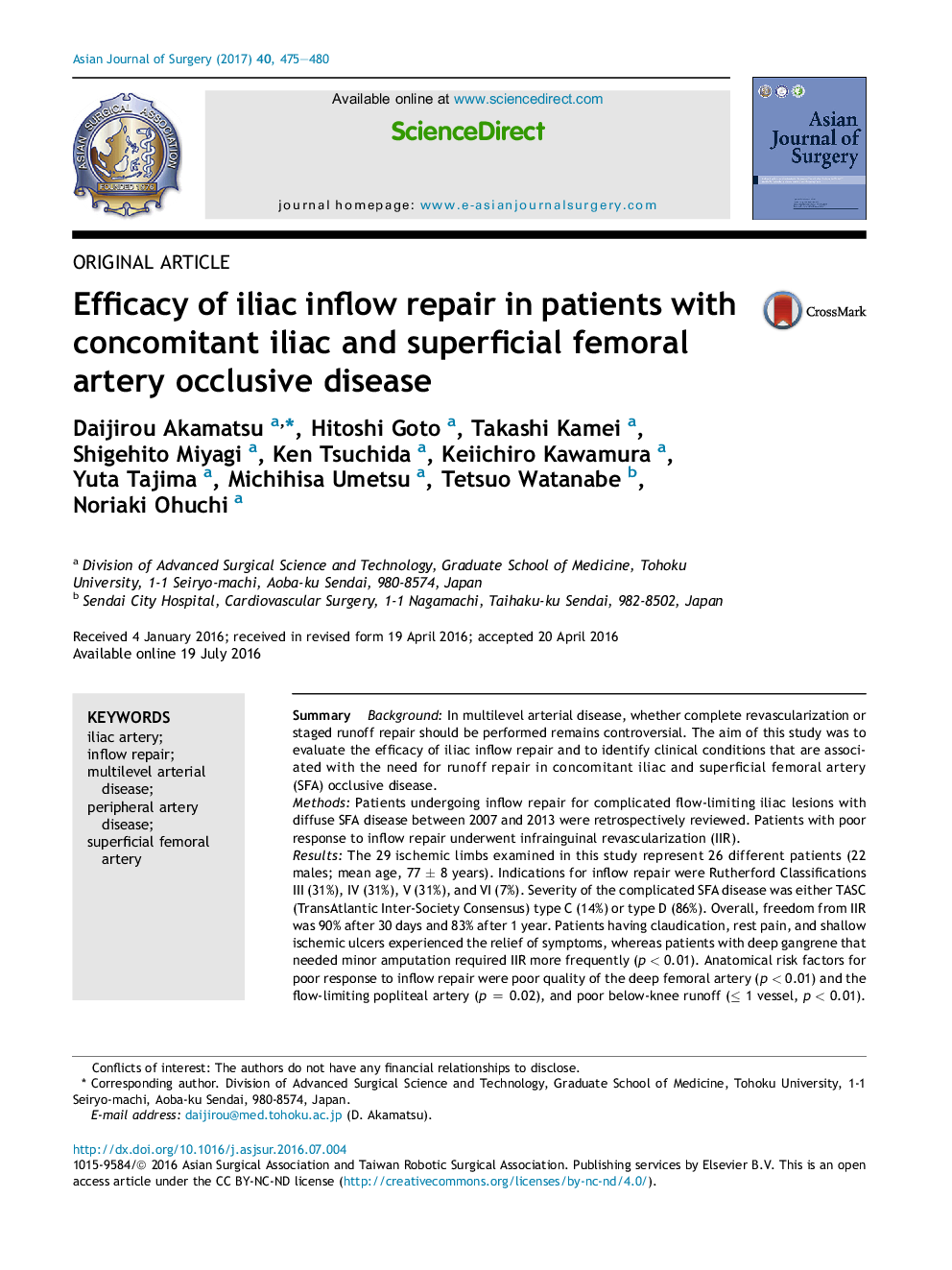| Article ID | Journal | Published Year | Pages | File Type |
|---|---|---|---|---|
| 5731467 | Asian Journal of Surgery | 2017 | 6 Pages |
SummaryBackgroundIn multilevel arterial disease, whether complete revascularization or staged runoff repair should be performed remains controversial. The aim of this study was to evaluate the efficacy of iliac inflow repair and to identify clinical conditions that are associated with the need for runoff repair in concomitant iliac and superficial femoral artery (SFA) occlusive disease.MethodsPatients undergoing inflow repair for complicated flow-limiting iliac lesions with diffuse SFA disease between 2007 and 2013 were retrospectively reviewed. Patients with poor response to inflow repair underwent infrainguinal revascularization (IIR).ResultsThe 29 ischemic limbs examined in this study represent 26 different patients (22 males; mean age, 77 ± 8 years). Indications for inflow repair were Rutherford Classifications III (31%), IV (31%), V (31%), and VI (7%). Severity of the complicated SFA disease was either TASC (TransAtlantic Inter-Society Consensus) type C (14%) or type D (86%). Overall, freedom from IIR was 90% after 30 days and 83% after 1 year. Patients having claudication, rest pain, and shallow ischemic ulcers experienced the relief of symptoms, whereas patients with deep gangrene that needed minor amputation required IIR more frequently (p < 0.01). Anatomical risk factors for poor response to inflow repair were poor quality of the deep femoral artery (p < 0.01) and the flow-limiting popliteal artery (p = 0.02), and poor below-knee runoff (⤠1 vessel, p < 0.01).ConclusionIliac inflow repair can reverse the symptoms in patients with multilevel arterial occlusive disease that are not associated with gangrenous toes.
